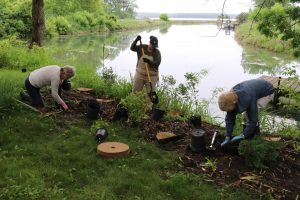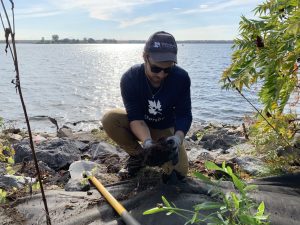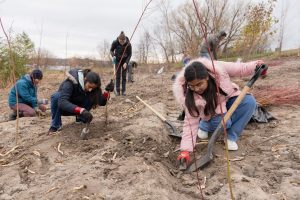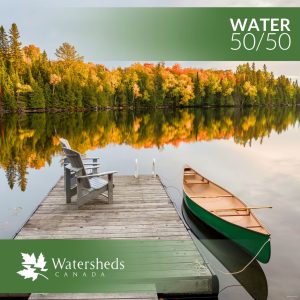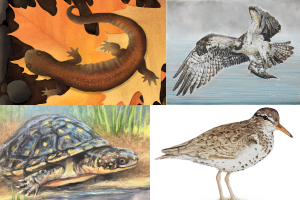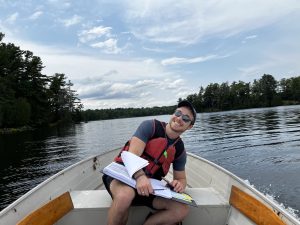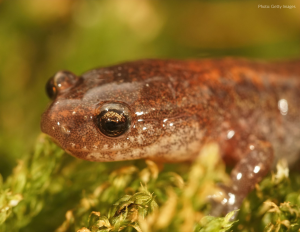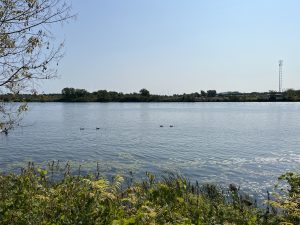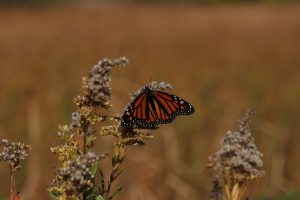Healthy Shorelands Tackle the Climate Crisis Extreme weather alerts sent more waterfront communities running for safety this past year. Perhaps nowhere else in Canada is the aftermath of wildfires, derechos, floods, and other symptoms of climate change more obvious than on lakes and rivers. Support for Watersheds Canada addresses climate change impacts on habitat, water quality, and costly insurance claims. Your Donations Plant the Future Watersheds Canada is a take-action organization that ... Read More
3 Seasons in Review
by Ty Fischer, Riparian Health Restoration Technician One of the great things about working for Watersheds Canada is the variety of experiences you get across many different subject areas. Throughout my internship, I have been lucky enough to assist with everything from shoreline assessments, to fish habitat restoration projects, and everything in between. After such a whirlwind of a past 6 months, where every day the staff at Watersheds Canada are looking ahead to what can be done next ... Read More
A watershed moment: When perfect strangers connect on the values of conservation
by Robert Pye, Executive Director “Any luck?” The question was clear but a visual on whomever asked it was not. In mid-retrieve, my spinner bait lost momentum when I paused to reply in the direction of the inquiry. I knew it came from the cottage that was set back from a vegetated shoreland and in the early morning shade. “Only little ones so far,” I said, keeping my vibe elusive yet positive. On the water, that’s my signature response to help protect my fishing pride, and my fishing ... Read More
Why should you support Watersheds Canada this Giving Tuesday?
by Monica Seidel, Communications and Fundraising Manager Watersheds Canada is a special organization. I have had the pleasure of being a part of this small team for over three years now. I have been mentored, taught, and encouraged by countless volunteers, community groups, and colleagues who all have a passion and dedication for coming together to protect Canada’s freshwater. While my job title mentions communications and fundraising, I have a deep passion for outreach education. Thanks ... Read More
Congratulations to the Water 50/50 winners!
Thank you to everyone for supporting Watersheds Canada's first-ever 50/50 charity lottery event! Because of you, we are able to bring nature back to our shores, fund fish spawning habitat, and promote hands-on lake and river stewardship programs. Environmental commitment and generosity always inspires the Watersheds Canada team, especially over the past six weeks of the Water 50/50 charity lottery. In total, $4,585 in prize money was awarded to three early bird winners ($150 each), and one ... Read More
A gift of a greener earth: symbolically adopt a turtle, salamander, osprey, or sandpiper!
by Ty Fischer, Riparian Health Restoration Technician With cooler temperatures approaching, you might be starting to think about the holiday season and everything that comes with it – skiing or snowboarding, sipping warm apple cider by the fire, snacking on gingerbread and other sweets, and of course, exchanging gifts with your friends and family. If you are starting your search for a thoughtful and unique gift for the nature lover in your life, look no further than our symbolic adoptions. ... Read More
Out on the Lake: Reflecting on my Experience with the Love Your Lake Program
by Ty Fischer, Riparian Habitat Restoration Intern Lakes are to Ontarians what the Rocky Mountains are to British Columbians – places of humbling grandeur, of ineffable richness and diversity, and of truly iconic and symbolic importance for our province. It is very fitting, then, that Watersheds Canada and Canadian Wildlife Federation's lake shoreline assessment program be called “Love Your Lake”. I have been fortunate enough to take part in this initiative and to personally witness this ... Read More
The Eastern Red-Backed Salamander and Our Shared Shoreline Responsibility
by Andres Clavier, Freshwater Stewardship Education Intern World Habitat Day, October 2nd, offers a moment to reflect on the interconnectedness of life within our Canadian landscapes. To commemorate, let us delve into the fascinating world of a prolific Canadian salamander species: the Eastern Red-Backed Salamander (Plethodon cinereus). This amphibian can teach us much about the value of shoreline habitats and the crucial role that we can play in conserving these unique ecosystems. From ... Read More
What’s your favourite river?
by Chloe Lajoie, Natural Edge Program Manager Today is a special day - today is World Rivers Day. As the program manager of Watersheds Canada’s program, The Natural Edge, I have helped landowners, students, community partners and volunteers, and municipalities plant over 104,000 native species to bring nature back to severely degraded shorelands. That work is happening right now! However, our fall planting season is tall on restoration site demands and short on funds. You help us get ... Read More
Join the Monarch Butterfly on its epic journey from Canada to Mexico!
by Andres Clavier, Freshwater Stewardship Education Intern Every year in the fall, millions of monarch butterflies embark on a long-distance journey, migrating thousands of kilometres from North America to California and even central Mexico. This incredible phenomenon is an essential event for our environment as these butterflies are important players in pollination and food chain integration for the geographies they cover. Because of this long journey, these beautiful creatures are facing ... Read More
- « Previous Page
- 1
- …
- 5
- 6
- 7
- 8
- 9
- …
- 18
- Next Page »

